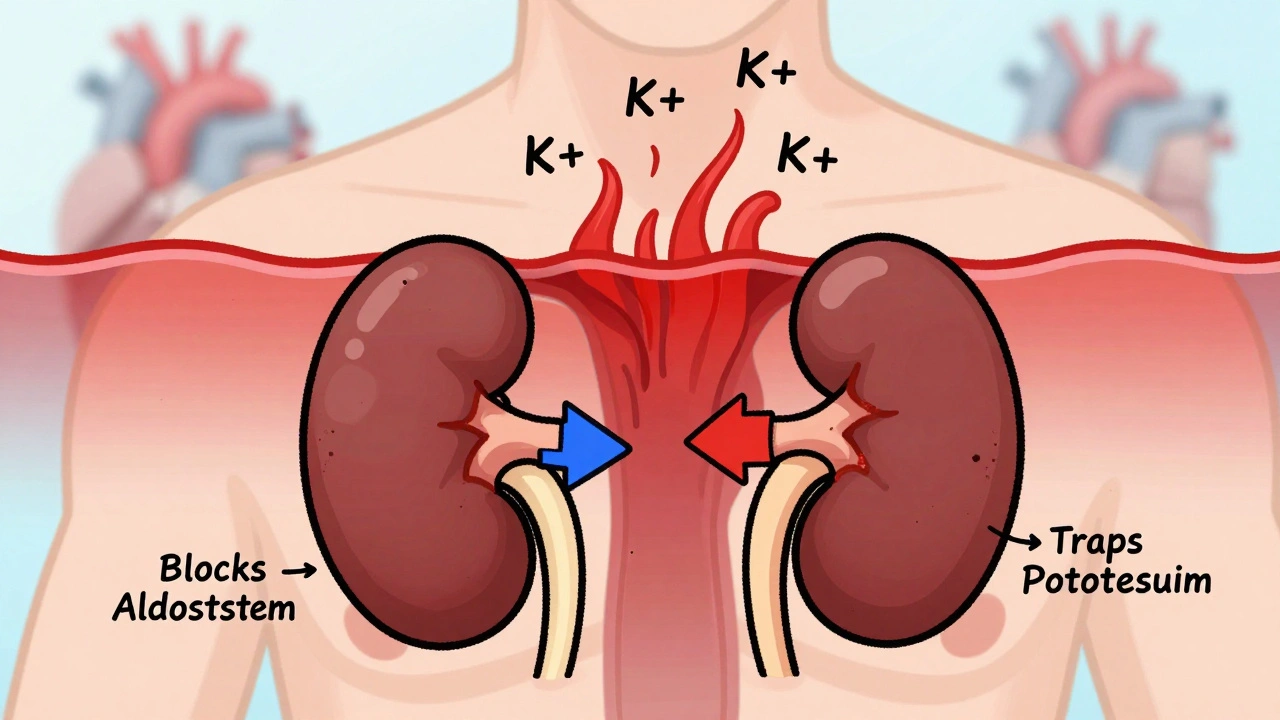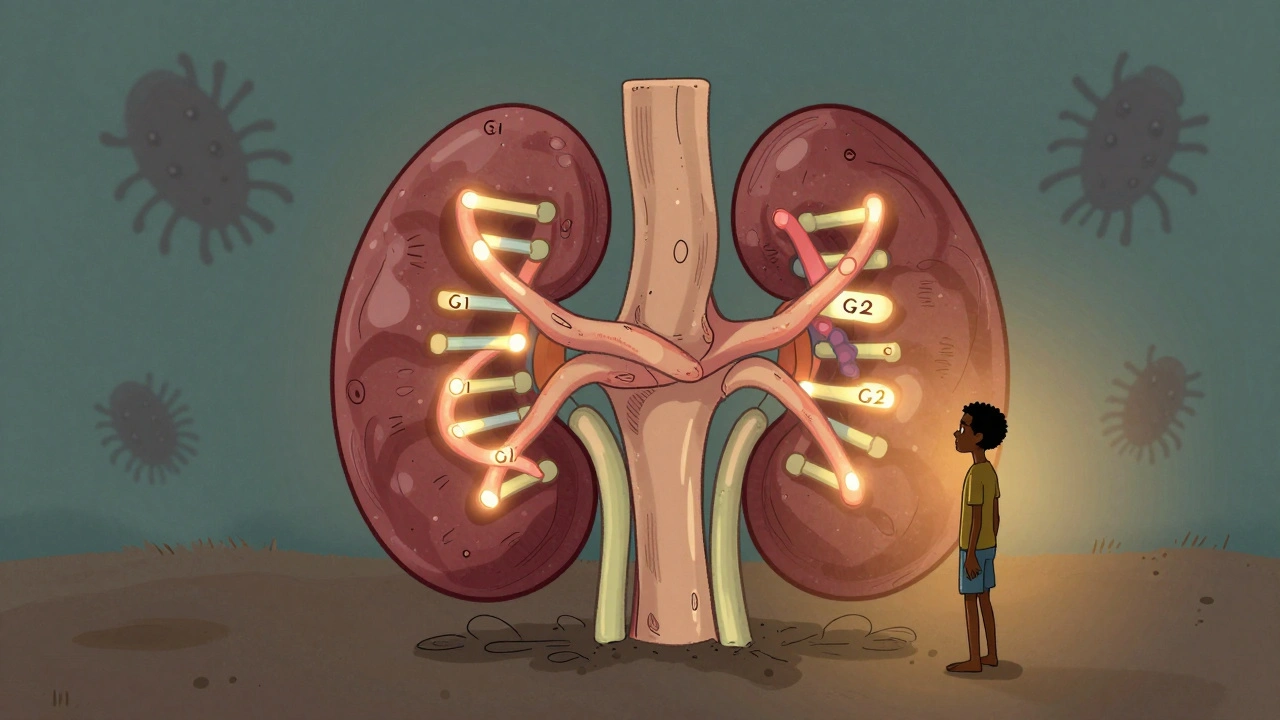Fertility Medication Success Calculator
Personalize your fertility medication selection
This tool helps estimate your success rates with different fertility medications based on your individual factors.
Your Information
Your preferences
Trying to get pregnant can feel like a maze of pills, appointments, and endless research. If you’ve landed on the name Serophene, you’re probably wondering whether it’s the right first step or if another option might work better for you. Below you’ll find a plain‑spoken rundown that walks through what Serophene actually does, which alternatives exist, and how they stack up on the things that matter most - success rates, side‑effects, cost, and convenience.
What is Serophene (Clomiphene Citrate)?
When doctors prescribe Serophene (Clomiphene citrate), they’re offering a selective estrogen receptor modulator (SERM) that has been the go‑to oral ovulation inducer for more than four decades. Its primary job is to trick the brain into thinking estrogen levels are low, which ramps up the release of follicle‑stimulating hormone (FSH) and luteinizing hormone (LH). The hormone surge pushes one (or sometimes more) ovarian follicles to mature, giving you an egg to release.
How Does Clomiphene Work for Ovulation?
Clomiphene attaches to estrogen receptors in the hypothalamus. By blocking estrogen’s normal feedback, the hypothalamus thinks the body is in a low‑estrogen state and sends a stronger signal to the pituitary gland. That signal translates into higher FSH and LH output. Most women on a typical 50mg‑100mg daily dose for five days see a measurable rise in follicle size within 7‑10 days, and about 80% will actually ovulate.
Main Alternatives to Serophene
While Serophene works well for many, it isn’t a universal fit. Below are the most common alternatives that fertility specialists turn to when clomiphene isn’t enough, or when its side‑effects become an issue.
- Letrozole - an aromatase inhibitor that lowers estrogen production directly, prompting the pituitary to release FSH.
- Tamoxifen - another SERM that works similarly to clomiphene but with a slightly different receptor binding profile.
- Gonadotropins - injectable hormones (FSH, hMG) that directly stimulate the ovaries without needing the brain’s feedback loop.
- Natural supplements - options such as maca root, vitex (chaste tree), and inositol are sometimes used to support ovulation, though scientific backing is modest.

Side‑Effect Profile: Serophene vs. Alternatives
Side‑effects often decide which medication you’ll stick with. Here’s a quick snapshot of the most common complaints for each option.
- Serophene: Hot flashes, mood swings, visual disturbances, and a “thin‑lining” of the uterine lining that can affect implantation.
- Letrozole: Mild joint pain, fatigue, and occasional nausea; generally fewer estrogen‑related side‑effects because estrogen levels actually drop.
- Tamoxifen: Similar to clomiphene - headaches, visual changes, and occasional ovarian cysts.
- Gonadotropins: Higher risk of multiple pregnancies (twins/triplets) and ovarian hyperstimulation syndrome (OHSS), which can be serious if not monitored.
Cost & Convenience Comparison
Money matters, especially if you’re paying out‑of‑pocket. Below is a side‑by‑side table that breaks down typical price ranges (U.S. 2025 data), administration method, and insurance coverage likelihood.
| Medication | Typical Dose & Cycle | Administration | Success Rate per Cycle* (≈) | Common Side‑Effects | Average Cost (US$) |
|---|---|---|---|---|---|
| Serophene (Clomiphene) | 50‑100mg daily for 5days | Oral pill | ≈30‑35% (clinical pregnancy) | Hot flashes, mood swings, visual disturbances | $30‑$70 per cycle |
| Letrozole | 2.5‑5mg daily for 5days | Oral pill | ≈35‑40% | Joint pain, fatigue, mild nausea | $40‑$90 per cycle |
| Tamoxifen | 20‑40mg daily for 5days | Oral pill | ≈30‑33% | Headaches, visual changes, cysts | $35‑$80 per cycle |
| Gonadotropins (FSH/hMG) | 75‑150IU daily for 7‑14days | Subcutaneous injection | ≈45‑55% (higher with IVF) | OHSS, multiple pregnancies, injection site soreness | $500‑$1,500 per cycle |
*Success rates vary based on age, underlying diagnosis, and clinic protocols.
Choosing the Right Option for You
There’s no one‑size‑fits‑all answer. Below are the key factors that most patients weigh when deciding among these drugs.
- Age and ovarian reserve: Women under 35 with decent ovarian reserve often succeed with Serophene or Letrozole. Over 35 or low reserve may need the stronger push from gonadotropins.
- PCOS diagnosis: Letrozole has become the preferred first‑line for many with polycystic ovary syndrome because it yields fewer thickened uterine linings and lower multiple‑pregnancy rates.
- Previous response: If you’ve tried clomiphene and didn’t ovulate, switching to letrozole or moving straight to injectable gonadotropins is common.
- Side‑effect tolerance: Those who can’t handle hot flashes may gravitate toward letrozole, while anyone worried about injection anxiety will stay with pills.
- Budget & insurance: Oral agents are usually covered under most plans; injectables often require prior authorization and a higher out‑of‑pocket expense.
- Monitoring capacity: Gonadotropins need frequent ultrasounds and blood work to avoid OHSS, so you’ll need a clinic that can provide close follow‑up.
Talking openly with your reproductive endocrinologist about these points will help tailor a protocol that matches your health profile and lifestyle.

Safety Monitoring & What to Expect During a Cycle
Regardless of the drug, the basic monitoring steps are similar:
- Day‑2 or Day‑3 baseline blood work (FSH, LH, estradiol, progesterone).
- Transvaginal ultrasounds starting around day10 to track follicle growth.
- Trigger shot (hCG or GnRH agonist) once a follicle reaches 18‑20mm.
- Timed intercourse or intrauterine insemination (IUI) 36‑40hours after the trigger.
- Pregnancy test 10‑14days post‑trigger.
Most clinics also schedule a “late‑follicular” hormone check to ensure estrogen isn’t soaring too high - a particular concern with clomiphene’s tendency to thin the uterine lining.
Quick Takeaways
- Serophene (clomiphene) is a long‑standing oral pill that works for about a third of cycles.
- Letrozole offers similar efficacy with fewer estrogen‑related side‑effects and is favored for PCOS.
- Tamoxifen is an alternative SERM but doesn’t provide a clear advantage over clomiphene.
- Injectable gonadotropins give the highest success rates but are costlier and need tighter monitoring.
- Choosing the right drug hinges on age, diagnosis, past response, budget, and willingness for injections or frequent office visits.
Frequently Asked Questions
Can I take Serophene and Letrozole together?
No. Both drugs trigger ovulation through different hormonal pathways, and using them together can cause excessive estrogen suppression or unpredictable follicle growth. Your doctor will pick one based on your specific situation.
What’s the risk of twins with Serophene?
Clomiphene can lead to multiple ovulation in about 5‑10% of cycles, so the chance of twins is modest. Gonadotropins raise that risk to 15‑30% because they stimulate several follicles at once.
Is Letrozole safe for women without PCOS?
Yes. Letrozole is approved off‑label for fertility in many countries and works for a broad range of patients. Its safety profile is comparable to clomiphene, with the added benefit of fewer estrogen‑related side‑effects.
How soon can I start a new cycle after a failed Serophene attempt?
Most clinics recommend waiting at least one full menstrual cycle (about 28days) to let hormone levels normalize before restarting medication.
Do insurance plans usually cover these fertility drugs?
Coverage varies widely. Oral agents like Serophene and Letrozole are often covered under broader prescription benefits, while injectable gonadotropins frequently require prior authorization and may have higher copays.







Jay Jonas
October 12, 2025 AT 23:13Yo, clomiphene is like that old buddy who rolls in fashionably late, thinks it’s still the life of the party, and somehow still gets everyone dancing. It tricks your hypothalamus into thinking estrogen levels are low, so FSH and LH throw a rave in your ovaries. Most cycles see a follicle pop open, but the side‑effects can feel like a summer heatwave in the middle of winter. Hot flashes? Check. Mood swings that could win an Oscar? Check. Visual “sparks” that make you wonder if you’re watching a fireworks show inside your head? Yep, that too. Still, for a price that barely covers a decent dinner, it’s a decent first‑line gamble if you’re okay with the drama.
Liam Warren
October 22, 2025 AT 05:26Listen up, folks-when you embark on an ovulation induction protocol, think of clomiphene as the baseline pharmacologic scaffold. The key is to calibrate the dose‑titration curve: start at 50 mg/day for five days, assess follicular response via transvaginal ultrasound, then adjust upward if the estradiol surge is suboptimal. Remember, the luteal phase support window is critical; add progesterone supplementation to stabilize the endometrium. If you hit a plateau, consider switching to letrozole, which offers a more favorable estrogenic profile and reduces the incidence of endometrial thinning. Keep your labs tight, track cycle day‑specific hormone levels, and maintain open communication with your RE for real‑time protocol tweaks. You’ve got the science on your side-let’s turn those numbers into a pregnancy.
BJ Anderson
October 31, 2025 AT 11:40Serophene holds its own as a first‑line ovulation inducer, delivering a roughly 30‑35 % clinical pregnancy rate per cycle. Its oral route is undeniably convenient, sparing you the anxiety of daily injections. On the flip side, the drug’s anti‑estrogenic action can thin the uterine lining, potentially compromising implantation. Moreover, the incidence of multiple follicular development hovers around 5‑10 %, raising the twins risk modestly compared to injectables. In patients with PCOS, letrozole often edges out clomiphene in both efficacy and side‑effect tolerability. Bottom line: if you’re budget‑conscious and can tolerate the hot flashes, Serophene remains a solid option; otherwise, weigh the trade‑offs before committing.
Alexander Rodriguez
November 9, 2025 AT 17:53Clomiphene works by blocking estrogen receptors in the hypothalamus, which makes the pituitary release more FSH and LH, leading to follicle growth.
Abhinav Sharma
November 19, 2025 AT 00:06If you’re mapping out your fertility journey, think of each medication as a waypoint on the road to success 🌟. Serophene offers an affordable entry point, but letrozole often provides a smoother ride with fewer estrogen‑related side effects 🚀. Tamoxifen sits in the middle, while gonadotropins deliver the highest success rates at a premium price tag 💰. Align your choice with your age, ovarian reserve, and comfort with injections, and you’ll set yourself up for the best possible outcome. Remember, the right plan is the one you can stick to consistently, so choose wisely and stay positive! 🌈
Welcher Saltsman
November 28, 2025 AT 06:20Honestly this whole med game feels like a rollercoaster but you can totally ride it out. Start with the cheap pills like clomiphene if you’re okay with little side effects then maybe step up to letrozole if you need a boost. If you’re scared of needles skip the gonads they’re pricey and need a lot of monitoring. Keep tracking your cycles don’t ignore the blood work and stay hopeful you’ll get there eventually.
april wang
December 7, 2025 AT 12:33When I first opened the article I felt a wave of information that demanded a slow, deliberate unpacking, and I found myself taking notes as if I were preparing for a lecture on reproductive endocrinology. The author began with a concise definition of Serophene, correctly noting that it is clomiphene citrate, a selective estrogen receptor modulator that has been a cornerstone of ovulation induction for over four decades. This historical context is valuable because it reminds clinicians and patients alike that the drug’s safety profile is well‑documented, even if its side‑effect spectrum can be inconvenient. The piece then transitions to a clear comparison of success rates, listing Serophene at roughly 30‑35 % per cycle, Letrozole at 35‑40 %, Tamoxifen at 30‑33 %, and gonadotropins at a much higher 45‑55 % when paired with IVF. Those numbers are presented in an easy‑to‑read table, which I appreciate for quick reference during a busy clinic day. However, the table could be improved by adding confidence intervals or citation markers so readers can verify the source data. The side‑effect discussion is thorough; hot flashes, visual disturbances, and endometrial thinning are appropriately highlighted for clomiphene, while joint pain and mild nausea are noted for Letrozole. I wish the author had also mentioned the psychological impact of these side effects, as anxiety can sometimes affect treatment adherence. Cost considerations are laid out quite plainly, ranging from $30‑$70 for Serophene to $500‑$1,500 for gonadotropins, which is essential for patients without robust insurance coverage. One oversight is the lack of discussion about indirect costs such as time off work for monitoring visits, which can be a significant burden. The article’s “Choosing the Right Option” section smartly aligns clinical factors-age, diagnosis, previous response, side‑effect tolerance, budget, and monitoring capacity-with medication selection. This decision‑making framework mirrors the shared‑decision model advocated in modern fertility care. Yet, the language sometimes drifts into a list format without enough connective commentary; a few transitional sentences could help synthesize the points. The safety monitoring checklist is spot‑on, reminding clinicians of baseline labs, follicle tracking, trigger timing, and post‑trigger pregnancy testing. I would add a note about the importance of confirming luteal phase adequacy, especially when using clomiphene, which can impair corpus luteum function. Finally, the FAQ section addresses common concerns in a succinct manner, though one answer-on combined use of Serophene and Letrozole-could benefit from an explicit citation of guidelines that forbid such practice. Overall, the article is a solid resource that balances depth with accessibility, making it suitable for both patients seeking to understand their options and providers looking for a quick refresher.